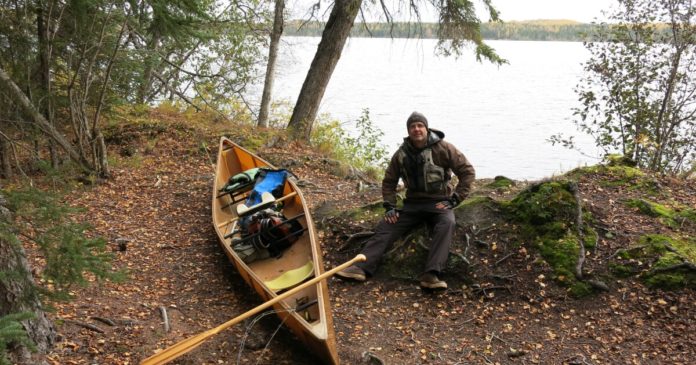The 100 miles of canoe trails on the Kenai National Wildlife Refuge are something of a well-kept secret — a hidden-from-view network of interconnected rivers and lakes that together make up the expansive Swanson River and Swan Lake canoe systems.
Dave Atcheson has been exploring and paddling those trails for the last 30 years.
“It’s one of my favorite places,” he said. “And it’s really underutilized, too.”
The Sterling author and fly-fishing instructor just published a guidebook that chronicles that system so others can enjoy it, too. The book is called “Canoeing Yaghanen: A Guide to Kenai National Wildlife Refuge’s Swan Lake and Swanson River Canoe Systems” and it’s published by Alaska Geographic.
The two canoe routes were established back when the refuge was the Moose Range, in the 1960s and 1970s. Today, the system includes two rivers and 70 lakes, stretching deep into protected refuge lands on the central peninsula.
Atcheson said he finds the quietude of those trails comforting. He grew up canoeing in the Adirondacks in New York and has been exploring and paddling the Kenai refuge’s trails since he arrived in Alaska.
But he said the breadth of the trails can be intimidating to newcomers. At the moment, there’s no other comprehensive guidebook for the trails.
Leah Eskelin, lead park ranger and visitor center manager with the Kenai National Wildlife Refuge, said the only other book on the system is now out of print.
“To not have an in-print guide — that especially a new visitor or member of the public here in the refuge can put in their hands and take out and use as kind of a whisper in their ear about best places to check out while they’re out in the canoe system — that’s hard for someone like myself, who really wants to make sure that everyone has the best experience while they’re here at the refuge,” she said.
For Atcheson’s research, he went back out onto the trails last summer, working out ways to explain the routes he’s been paddling for so long.
“I spent a lot of time out there revisiting places I hadn’t been in a while, which was really fun,” he said.
The Dena’ina word in the book’s title, “Yaghanen” means “the good land,” referring to the Dena’ina homelands of the Cook Inlet region. Atcheson said he wanted to pay homage to the people who have used those rivers and lakes for generations.
The book is filled with maps and visuals from Kathy Lepley of Galaxy Graphics. It’s waterproof, for in-the-field use, and includes pages on packrafting, a guide on what to bring on a trip and information about traveling the trails in the winter.
“I love crust skiing out there in April when the snow compacts and it’s crusty, ’cause you can go anywhere,” Atcheson said. “You can just go places you can’t go in the summer.”
When it comes to writing about the natural world, he said there’s always a give and take.
On one hand, he said it’s tempting to not draw too much attention to places like these trail systems that don’t get a whole lot of traffic.
“But I think the more people who get out and utilize these things and get out in the natural world, the more apt they are to protect it and take care of it. Which we need big time,” he said.
The new book is available on the Alaska Geographic website and at the Kenai National Wildlife Refuge headquarters in Soldotna.
Credit: Source link






























